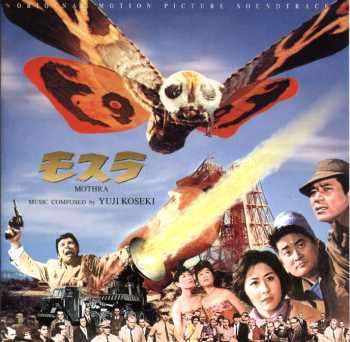Mothra

Mothra is giant moth monster, who later became a common recurring character in Godzilla's films. Created when the Kaiju genre was still in its infancy, the 1961 Mothra wasn't dark and full of horror. In contrast, the film was colorful and had an air of fantasy about it. There's an influence of Western Christianity as well. Instead of ending with her death, Mothra achieves her mission and leaves on good terms. The actual villain is a greedy capitalist and tomb raider from the American and Russian stand-in, Rolisica.
The four survivors of a shipwreck are discovered to have been unaffected by the radiation on Infant Island due to the berries offered by the island natives. When this story breaks, the European country of Rolisica and Japan co-sponsor a scientific expedition to Infant Island. They encounter the natives and two tiny women called the Shobijin, who plead for the halt of atomic testing near the island. The crew acknowledges this, and returns home sworn to secrecy. But the greedy Rolisican Clark Nelson secretly returns to kidnap the Shobijin and exploit their singing abilities for profit. Our heroes manage to contact them, who are confident Mothra will save them but fear that innocents would get hurt. The Shobijin can't be rescued through legal channels and their connection to Mothra is ignored as she lays destruction upon Japan...
She is one of the most popular monsters in the Toho monster franchise. Whenever Godzilla is waning, Mothra is one of the classic monsters brought out to give a box office boost. She has been so popular that a Spear Counterpart was featured in a trilogy in the late 1990s, called Rebirth of Mothra.
- Berserk Button: As mentioned below, Mothra is usually very peaceful. But, she won't hesitate to unleash her full wrath upon anyone who dares to harm/kidnap her fairy companions.
- Big Applesauce: New Kirk City's an obvious stand-in for it.
- Butt Monkey: Fukuda, who ends up on the end of some good-natured and not so good-natured jabs.
- Corrupt Corporate Executive: Nelson.
- Death Ray: The Rolisican Atomic Heat-Ray Cannons.
- Fake Nationality: The natives of Infant Island are obviously Japanese actors decked in the Polynesian equivalent of Blackface.
- Fictional Counterpart: Rolisica for America and Russia.
- Gentle Giant: Mothra is by far the most benevolent and peaceful among Toho's Kaiju. That is, as long as you don't harm her fairy companions.
- Hoist by His Own Petard: Nelson had no idea that each theatrical performance by the Shobijin was strengthening Mothra and guiding her toward them.
- Intrepid Reporter: Zenichiro "Bulldog" Fukuda and his clever photographer, Michi Hanamura. They will sneak into places that they shouldn't sneak into in order to get a story.
- Kick the Dog: Where to start with Nelson...
- Mama Bear: Never mess with Mothra's fairy friends
- The Professor: Dr. Shinji Chûjô, a cultural anthropologist, is the young cute one (Akihiro Tayama returned to play him in several subsequent Mothra pictures); Dr. Harada appears to be an M.D. with a number of other degrees under his belt.
- Shoe Phone: Michi has a camera disguised as a lighter, in case she enters a No Cameras Allowed zone or to photograph a camera-shy person.
- Telepathy: How the Shobijin are able to communicate with humans who use other languages.
- Theme Music Power-Up: How the Shobijin and Infant Islanders are able to summon Mothra, guide her to the Shobijin, and give her power ups.
- Too Long; Didn't Dub: When the Shobijin are about to reunite with Mothra, the English dub just has the characters go "Sayonara."
- What Do You Mean Its Not Symbolic: Mothra's a life-death-rebirth entity with a symbol resembling a shining cross